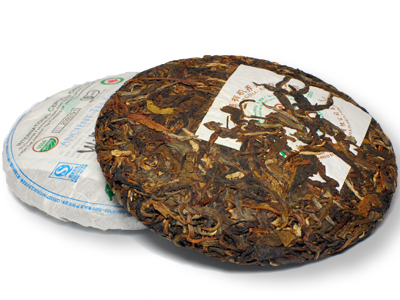I. What is Pu-erh tea
Pu-erh was derived from the name of a town situated in the southwest province of Yunnan, China. Even though tea is not actually cultivated here, it used to be quite a popular place for buying tea. – Read more…
II. Pu-erh’s Origins
Historically, the origin of Pu-erh tea dates back to the Eastern Han Dynasty during the period 25 to 220 CE in Yunnan where the leaves were sun-dried. The region’s tea plants had big but tender leaves with hardy stems. – Read more…
III. Production
• Pu’erh, or Dayeh, is a big leaf variety of tea cultivated and picked all year unlike other tea varieties that were unavailable part of the year.
• Although dark Pu’erh tastes a lot like black tea, it isn’t black tea or oolong tea but is a class all its own. – Read more…
IV. Types of Pu’erh and Brewing
Sheng pu-erh, also referred to as raw or green pu-erh, is not oxidized. Sheng pu-erh is original pu-erh that is made to age many years before being consumed. – Read more…
V. Flavours of Pu-Erh Tea
Available in green and black variants, either loose leaf or cake. Rich and smooth tasting reminiscent of plums, dates or chocolate. Pu-Erh is aged in cellars that are dry but cool to further mellow and add character to its taste. – Read more…
VI. Pu-Erh Tea and Its Many Health Benefits
Whether loose leaf forms or in tuo cha, these distinctive teas have been consumed in China for a long time for healing and good health. Their soothing qualities help in digestion and are best after eating heavy or oily foods. – Read more…
VII. Shaping and Packaging Methods
• Pu-erh tea has a special packaging method as well as many possibilities in
shapes when compressed.
• Both the green and black pu-erh teas are left as loose leaves or compressed in
“cakes” using any of these shapes : – Read more…
VIII. Storing Pu-Erh Tea
• Green and black Pu-Erh tea can be stored for a long time.
• The tea’s overall quality becomes better the longer it is stored. – Read more…
IX. Criteria For Choosing Pu-Erh Tea
To correctly determine Pu-erh tea’s quality, one must be knowledgeable and experienced. The tea’s quality is impacted by several considerations such as the origin of production, the leaves’ source, the leaves’ quality , the method of farming, the period of harvest and storage conditions. – Read more…